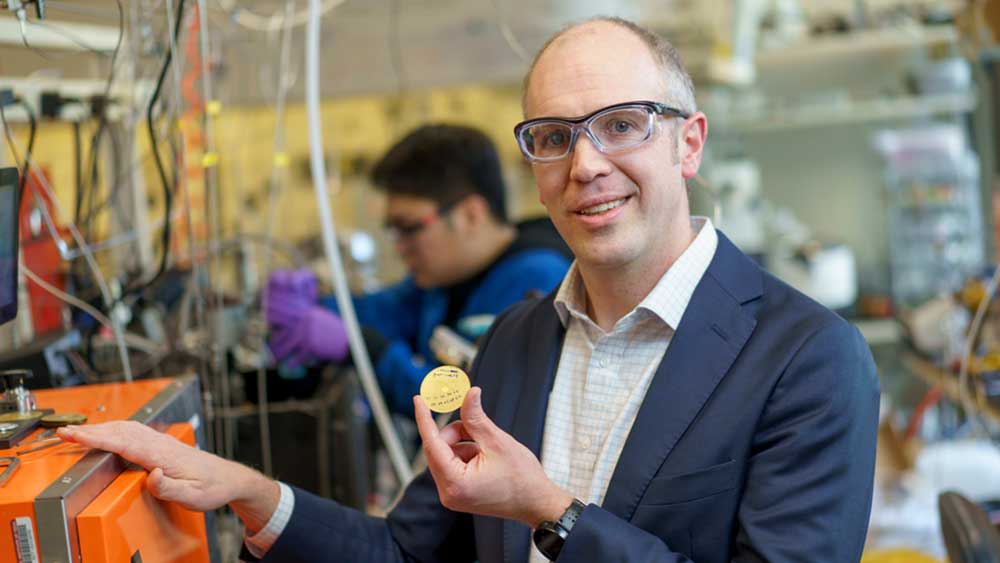
In his lab at MIT, Zachary Smith is designing membranes with tiny pores that can filter tiny molecules based on their size. Here, Smith holds a “membrane coupon,” which is a small piece of polymer that can filter gas molecules selectively. Credit: Jodi Hilton
For many industrial processes, the typical way to separate gases, liquids, or ions is with heat, using slight differences in boiling points to purify mixtures. These thermal processes account for roughly 10% of the energy use in the United States.
|
ADVERTISEMENT |
MIT chemical engineer Zachary Smith wants to reduce costs and carbon footprints by replacing these energy-intensive processes with highly efficient filters that can separate gases, liquids, and ions at room temperature.
In his MIT lab, Smith designs membranes with tiny pores that can filter tiny molecules based on their size. These membranes could be useful for purifying biogas, capturing carbon dioxide from power plant emissions, or generating hydrogen fuel.
“We’re taking materials that have unique capabilities for separating molecules and ions with precision, and applying them to applications where the current processes are not efficient, and where there’s an enormous carbon footprint,” says Smith, an associate professor of chemical engineering.
…
Add new comment